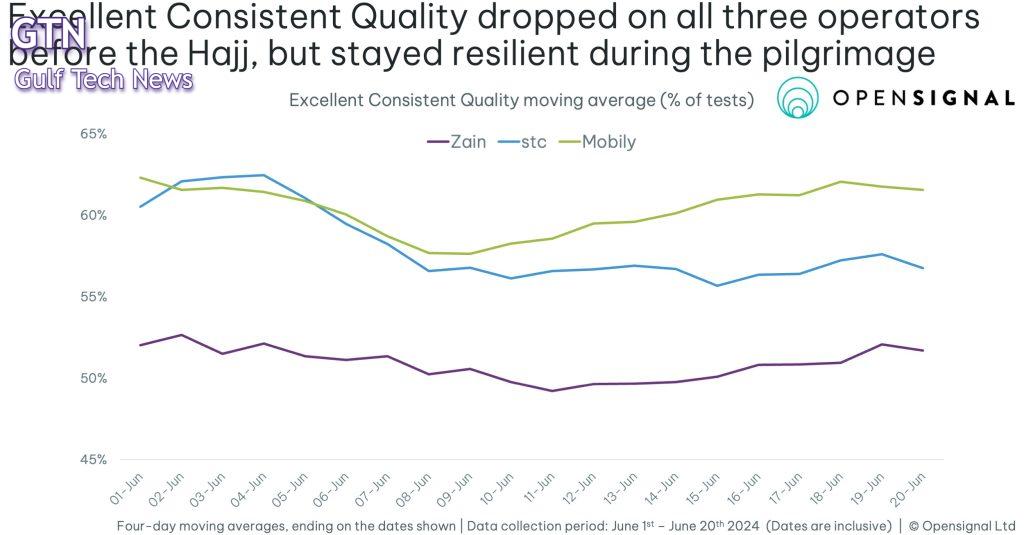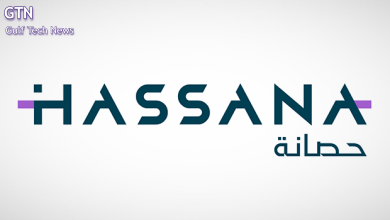Saudi Mobile Networks STC, Mobily, and Zain Excel During Hajj

Saudi Arabia’s Mobile Networks Shine During Record-Breaking Hajj
Saudi Arabia’s mobile network operators successfully maintained network performance during the recent Hajj pilgrimage, according to a new report by Opensignal, the leading global provider of independent insight and data into network experience and market performance.
The report highlights the operators’ resilience in handling the surge in data traffic and network congestion caused by the millions of pilgrims visiting Mecca.
Record Data Usage and Tower Deployments
The Communications Space and Technology Commission (CST) of Saudi Arabia reported record data usage during this year’s Hajj.
Call success rates surpassed an impressive 99% with over 44.8 million voice calls made in Mecca and the holy sites on Eid Al-Adha alone.
Data consumption also reached record highs, with a staggering 5.79 petabytes used – double the global average per capita usage.
This doubled the global average per capita usage of 380MB. To meet the high demand, over 6200 towers were allocated in Mecca, Medina, and the Holy Sites, with more than 4,000 supporting the most advanced 5G technology. – that is, a 37% increase from the previous year.
These advancements align with Saudi Arabia’s Vision 2030The Kingdom’s ambitious roadmap prioritizes economic diversification, global engagement, and a comprehensive digital transformation.
Investments in robust 5G infrastructure play a key role in achieving these goals and ensuring a future-proofed digital economy.

Network Performance Throughout the Hajj
While network performance dipped slightly in Mecca leading up to Hajj, all three major operators Stc, Zain, and Mobily demonstrated swift recovery, showcasing their preparedness for the influx of pilgrims and the strong support from the CST.
To assess user experience beyond traditional download speeds, Opensignal utilizes the “Excellent Consistent Quality” (ECQ) metric.
This metric goes deeper, measuring factors like upload speed, latency, jitter, and packet loss to determine how well a network supports common applications like video calls and gaming. Essentially, it provides a more nuanced picture of real-world performance during the Hajj.
Stc Mobily and Zain demonstrated robust performance. The average download speeds increased significantly on stc and Zain networks.
Mapping ECQ values to two-kilometer grid squares before and during Hajj indicated that while central Mecca experienced congestion. The quality spread to surrounding areas.
This reflects where pilgrims congregated. Despite challenges posed by the large influx of worshippers operators managed to maintain service quality.

There was a notable recovery in ECQ scores during Hajj. This resilience underscores effectiveness of infrastructure improvements and technological advancements implemented by Saudi operators.
The analysis of ECQ scores revealed some interesting insights. While download speeds on stc and Zain networks saw significant improvements compared to the previous year, ECQ scores remained stable across all operators.
This indicates a consistent user experience for applications despite the increased demand.
This is even more impressive considering the initial dip in ECQ scores leading up to the Hajj, likely due to pilgrim arrival and congestion in busy locations. However, during the Hajj period itself, a combination of operator efforts and reduced network load from pilgrims engaged in worship allowed networks to recover quickly.
Notably, the four-day moving average for Zain dipped just below 50%, while stc stayed above 55% and Mobily remained above 57%.




